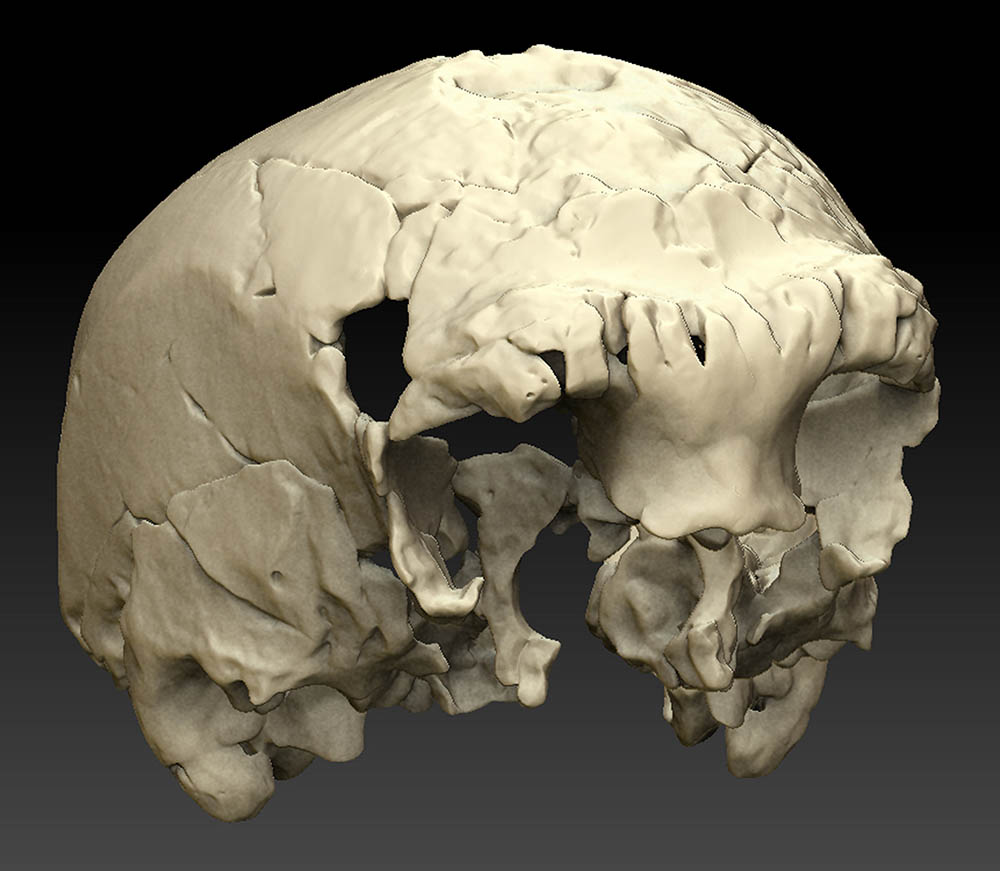The skull of Aroeira 3, discovered in 2013 in the cave with the same name in the Almonda archaeological complex, in Torres Novas, is, without a doubt, one of the great paleoanthropological discoveries made in Portuguese territory. At 400 years old, it is the oldest fossil ever discovered in Portugal.
The finding is by the team led by archaeologist João Zilhão, who coordinates the investigation now published.
The great discoveries in our territory, although to be expected, have taken a long time. The Aroeira skull confirms the expectation and potential of some places and proves that hominids obviously walked around here at the same time as they walked in the rest of the Iberian Peninsula.
The skull is also the most western Middle Pleistocene fossil in Europe and one of the few directly associated with Acheulean industry (double-faced stone utensils).
The dating is very solid, unlike the vast majority of European fossils from this period, which are generally characterized by inaccurate dating and context.
In addition to being associated with abundant faunal remains, it is also linked to burnt bones, which suggests that it could use fire.
With this discovery, it can be said that the expansion of hominids, of the lithic industry and, probably, of fire to the westernmost end of Europe, happened quickly.
Morphologically it is not a typical Neanderthal. The article published in Proceedings of the National Academy of Sciences analyzes in detail the cranial portions that are preserved and makes comparisons with other fossils. The skull is incomplete, has alterations post mortem (one of them made at the time of its discovery) and was subjected to a reconstruction process.
It is well-dated and from a period that is most likely an important divergence: one line may have given rise to Neanderthals and the other to modern men. But this skull cannot answer key questions and it cannot be definitively said whether or not it was at the origin of the Neanderthal.

Several European fossils are known with a dating close to that of Aroeira3, which allows morphological comparisons to be made. Everything indicates that, at this time, about 400 thousand years ago, there was some morphological diversity and that evolution was in mosaic, that is, not all characteristics evolved at the same pace.
There are at least three types of cranial morphologies, which does not necessarily mean that they were three different species. In Germany (Bilzingsleben and Steinheim), Spain (Sima de los Huesos, Atapuerca), Greece (Petralona) and Italy (Ceprano), there are coeval skulls or cranial portions.
Perhaps the closest to Aroeira 3 is the B1 fossil of Bilzingsleben, but the skull now discovered has a morphological combination that seems unique. I believe that the fact that it is incomplete does not allow us to know if this combination was really that unique.
The dating of this finding is very relevant, as it refers to the issue of the origin of the Neanderthals, who were born in Europe. However, it is not yet known exactly who their direct ancestors were.
Paleogenetic analyzes have shed new insights into this debate, pointing to a more ancient origin of the Neanderthals, probably around 350-400 years ago. In this case, fossils such as those from Sima de los Huesos, Atapuerca, the largest fossil treasure in the Middle Pleistocene World, might even be considered members of this clade.
Personally, I think it's just a matter of time before Atapuerca's team proposes a new species (another one) for the Sima de Los Huesos fossils.
The Aroeira skull, together with the infant skeleton Lagar Velho 1 (1998, Vale do Lapedo), are the most important paleoanthropological discoveries ever made in Portuguese territory. Both are associated with Portuguese archaeologist João Zilhão.
The Lapedo Boy dates back to just under 30 years, from the Upper Paleolithic, and remains the most complete fossil ever discovered in our territory. It is a Homo sapiens and is interpreted as the result of miscegenation between Neanderthal and modern man.
As for the Neanderthal fossils discovered so far in Portugal, they are in fact very fragmented, reduced and recent.
Unfortunately, there is very little to report: Gruta da Oliveira (Almonda), Neanderthal fragment, Gruta Nova da Columbeira, Neanderthal tooth (approximately 37 thousand years), Gruta da Figueira Brava, Neanderthal tooth with about 30 thousand years.
This scenario contrasts well with that of the “Spanish” Neanderthals, where 1900 human remains belonging to at least 12 individuals were found in El Sidron alone.
Still, I think it's time to show the discovered human fossils, even to better contextualize new and important discoveries, as is the case of the skull of Aroeira 3.
Author: Eugenia Cunha
(Functional Ecology Center, Forensic Anthropology Laboratory, Department of Life Sciences, University of Coimbra)
Science in the Regional Press – Ciência Viva



















Comments